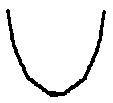Welcome, welcome, into my laboratory! I do not experiment with fashion, but today I decided to make an exception! Fashion - it is not my strong suit.
I joke not! This is coming from the girl who likes skirts so long and full they could cover an elephant. And t-shirts. I like t-shirts.
Whyville is not much different. Long ago, when Whyville was in a feeble and primitive state (slightly exaggerating), I went about as a pixie with frizzy hair. Then, for a while, I actually followed the crowd and used the typical hair and clothing and whatnot. Then, I remember, for a while I used a creepy mummy/witch getup, and then I transformed into the essence of a large hat. Then somewhere along there came the stick figure head, and then finally the current face.
Needless to say, I was not very . . . fashion prone.
I am, however, logically prone, and I believe I can offer logical advice to fashion. Don't believe me? Bah, shun the nonbeliever! Everything can be solved by logic!
Anyhow, here we go. I will show you my Lab-converted Fashion to discover what truly is going wrong . . .

Now, each of these specimens have a common denominator. It appears that their mouths are on some sort of race to reach the neck . . . very interesting. But even more intriguing is the fact that the eyes are trailing behind the mouths. There must be some undeniable urge to reach this neck, but there is no observable explanation for this occurrence. Interesting.
Another note must be made - the specimens observed here do indeed seem to find this race appealing for some sort. It is considered very attractive, and the features that are closer to the neck are the features that make the specimen more appealing - according to my data, of course.

Now we move onto the specimen set B. The mouths and eyes on these, apparently, are on no such race to reach the neck. They appear perfectly content sitting, unmutated, smack dab in the center of the face. However, according to the society, my observations conclude that they are indeed not considered attractive.
For those of you who now choose to run screaming out of the Fashion Lab, and especially for those accompanied by brain implosion, I will be sympathetic and offer the layman's explanation: The first row of people are considered attractive because they have low facial features. The second row are considered less attractive because they have more accurately proportioned facial features.
Now, this being Whyville, I ask to you, WHY?
Let me explain to you. Everything about faces is exaggeration. If you see something pretty on a real-life face, you mimic that on a Whyville face - except you exaggerate it. Big hair is pretty, thus huge Whyville hair. Large eyes and lips are pretty - thus huge eyes and lips on Whyville. From layered tees balanced precariously upon the shoulders, or fluffy pink hats so big they surely weigh more than Queen Elizabeth's getup, to eyeshadow any self-respecting clown would be proud of - it's all exaggeration. You take the ideal image - and you make it bigger. Anything you see on Whyville (assuming it's not a monkey, some mangled contraption with massive teeth, the infamous starved tater head, etc. - you get the idea) is mimicking the ideal traits of a supermodel. We all clear?
So if attractive features simply mimic real faces, why are lips and eyes so dratted low considered beautiful - when they obviously are not mimicking ideal traits?
Those considered beautiful in real life don't have lips or eyes sunken unnaturally lower - we'd be more likely to call them mutated than beautiful. Since only beautiful qualities are exaggerated, and this is obviously not beautiful, why is it exaggerated?
Let us re-enter the Fashion Lab.

Here we have example A - a typical replica of a specimen's cranium base.
Now, my lab partners and I . . . well, actually, just I, made a strange discovery. This apparently innocent round shape may truly be the key to this puzzle. It is the only sort of base building block created by the Whyville culture we now observe, and because of this it may be causing the race! Let me explain.
The specimens measure beauty by what they replicate from the sort of face that's staring at your computer screen right now. And since they are capable of producing only one building block - example A - they must fit it into their example of beauty. And there is only one time in real beauty that can be replicated on example A. Observe.

To explain for those who dare not venture entirely into the Fashion Lab - there is only one time when this round shape is found on a true human head - it is when the human head is looking down, like so. Naturally, this means that the eyes would be placed lower, and the lips do indeed look as if they would be set upon the neck!
Since faces have such a round shape, the only way to copy a real face with the beautiful attributes without looking like a shaved Santa is to make the face look down. Once it looks down, you can exaggerate all you want.
The mystery has been solved!
But before I shoo you all out of my lab to start experimenting how exactly electricity and Times Editors mix, I will give one last suggestion.
The bases are round, so that means the faces must look down - right? Well, what if the bases weren't round? What if you copied a real face -

And created a base that looked something like this?

Hypothetically, couldn't you create a face that has the attributes of the first line of people - meaning being attractive - but also the attributes of the second line of people - meaning looking straight ahead and not down? If you created a face with such a base, then that means you don't have to look down to be beautiful.
Think on that for a while. Now shoo so I can get these generators fired up.
Antier